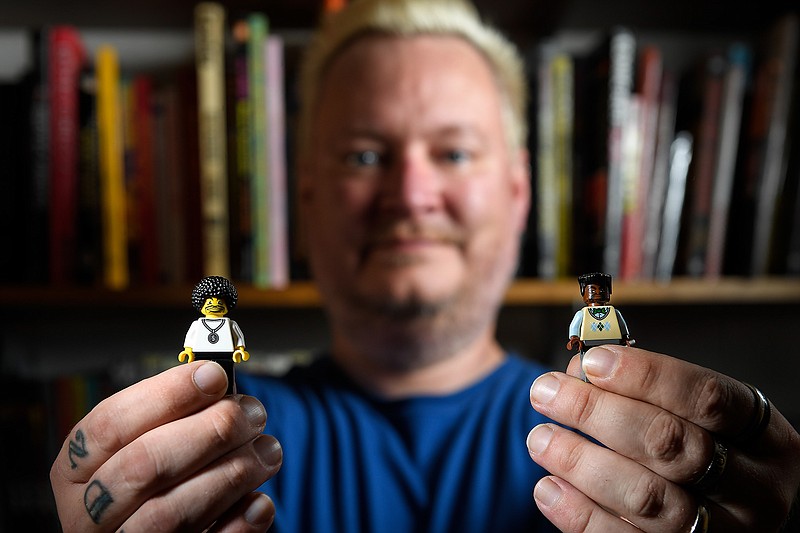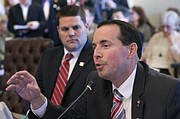MINNEAPOLIS-All in all, it's not just another brick in the toy chest.
At least that's the conclusion you might reach after reading a new book coedited by University of Minnesota philosophy professor Roy T. Cook titled "LEGO and Philosophy: Constructing Reality Brick by Brick."
Cook and co-editor Sondra Bacharach, a senior lecturer in philosophy at the Victoria University of Wellington in New Zealand, recruited a bunch of other deep thinkers to write about issues raised by the venerable plastic building blocks.
Nearly 100 people responded to the call for essays, 21 of which are in the book. The essayists, many of them fellow philosophy professors, dove into issues about Lego and gender stereotypes, Lego and ethics, Lego and the nature of impermanence, Lego and German philosopher Martin Heidegger, Lego and autonomy and the human individual (Lego my ego?).
Cook was the right man to edit the book because, while his day job involves thinking about the philosophical facets of paradoxes, in his free time, he's a Lego master builder with a collection of more than 3 million Lego pieces in his Minneapolis home.
The plastic bricks are "a medium through which ideas can be expressed," according to one essay in the book.
And those plastic bricks have built the world's largest toy manufacturer, a "transgenerational multimedia empire" spanning animated television shows, feature films, theme parks, adult fan conventions, an educational robotics program, team-building workshops for businesses, a clothing line and an endowed professorship at Cambridge University.
The Lego world is an idealistic place where everything seems awesome, "a fundamentally optimistic medium," where the name of the company comes from the Danish words meaning "play well," according to Cook and his fellow philosophers.
The company doesn't shy away from politics.
Lego farm sets are environmentally friendly and vegetarian, where slaughterhouses, "concentrated animal feeding operations," "toxic lagoons of feces" and "impoverished immigrant farmworkers" do not exist. Lego has avoided depicting guns or other modern weaponry in its kits. And it was one of the first toymakers to promote gender equality, according to an essay co-authored by Bacharach.
"The urge to create is equally strong in all children. Boys and girls," it said in a 1974 pamphlet. In 2014, it launched a Lego set featuring female scientist figurines.
In his essay for the book, Cook takes on the thorny issue of race.
Lego created a "racially idealized" world when it issued its "minifigures" in 1978, where every figure had a smiley face and bright yellow skin.
"Race (as well as gender and other differences) was erased via the creation of a uniformly bright-yellow-skinned world where minifigures could not be distinguished or discriminated against based on the color of their ABS plastic skins. Or, at least, that was the intention," according to Cook.
Things started to get more complicated in 1999, when Lego produced a "Star Wars" licensed theme set. Fans noticed that there wasn't a Lando Calrissian minifigure.
Then in 2003, Lego introduced a set of minifigures depicting NBA basketball players. The black players were molded in brown plastic. The white players were in peach-colored plastic.
According to Cook, there are now more than two dozen shades of skin tones used in Lego minifigures in addition to figures with "racially and ethnically stereotyped" facial features.
Cook said race is also a question in the animated Lego movies. In 2014's "The Lego Movie," Batman is white, but his girlfriend, Wyldstyle, is in the original bright yellow. What race is she?


